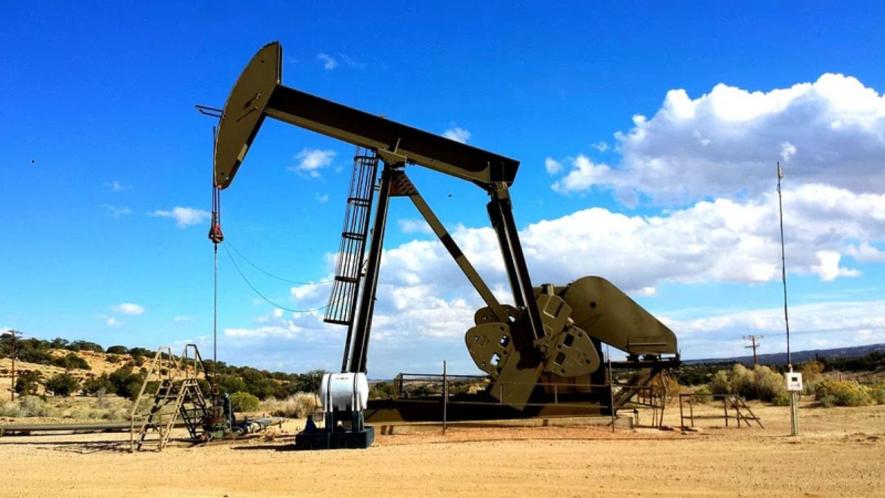US threatens sanctions against India for Buying Russian Oil

Representational Image. Image Courtesy: Rawpixel
US Senator and Chairman of the Senate Budget Committee, Lindsey Graham has issued an open warning of heightened tariffs on India, Brazil and China if they continue buying oil from Russia. This money, he claims is what allows Russia to continue financing its war efforts against Ukraine. If the three BRICS nations continue buying from Russia, Graham said “we’re going to crush your economy, because what you are doing is blood money.” He noted that India, Brazil and China account for 80% of the exports of Russian oil. To provide some context, we should recall that upon the beginning of the invasion, UK and US banned the import of Russian oil and gas. The EU however banned the import of sea-borne oil but not gas.
The amount of money received by Russia from its sale of fossil fuel between 2022 and 2025, that is, the Ukraine war period, is over USD 939 billion. What India has paid to Russia for oil during the same period is USD 131 billion. We should bear in mind however that money received by Russia from oil sales would have to be invested in the production of armaments for any war effort whereas Ukraine is receiving an array of armaments from the West as aid.
In case they continue to purchase discounted Russian oil, the three BRICS nations may be subjected to what are known as secondary sanctions by the US. This would entail taxing imports from these countries to the US at 100 percent of their value. As per the latest available figures, China exports USD 442 billion worth of goods to the US, India USD 85.5 billion worth, and Brazil USD 42.3 billion worth. These three countries alone account for 17 percent of all US imports. A 100 percent tariff on all these goods would have massive repercussions for both sides. However, exports from India, China and Brazil make up just 1.95 percent of the US GDP, meaning that crucial as they may be, the Trump administration could choose to ride it out.
One possible way in which this scenario may play out, if the Trump administration does choose to levy these secondary sanctions, is that India, China and Brazil along with other members of BRICS would levy counter tariffs. Total US exports to BRICS nations as per the latest available data are USD 241.31 billion. Bear in mind that this figure does not include services for which clear data and hence a valuation is not available. Counter-tariffs, were they to be imposed, would greatly affect this and may massively disrupt the global economy. Notably, this may accelerate long term efforts at de-dollarisation, which is already underway strongly among BRICS nations.
The price at which Russian oil has been reaching India is worth noting. A report from EU Today lists the price at which Russian crude oil reaches India at USD 84 per barrel, significantly above the cap imposed by G7. Despite this difference the price at which this oil reaches India is USD 3.8 per barrel cheaper than Brent crude.
Where would India get its oil from if it buckles down under US pressure to stop buying oil from Russia? India is presently highly dependent on Russian oil, which makes up 40 percent of India’s crude oil imports. To put this in perspective, prior to the start of Ukraine war in 2022, Russian crude made up less than 1 percent of India’s crude imports. One way would be for India to turn again to its traditional suppliers in West Asia but securing deals from them at competitive prices may prove a challenge and in all likelihood would not match the discount the Russians are offering presently. This would mean higher prices for fuel unless the government drastically compensates elsewhere to keep the prices down. And taken this into account we should keep in mind that the Foreign Secretary of India, Vikram Misri during a visit to the UK has asserted that “…We have been very clear that insofar as energy security is concerned, it is the highest priority of the government of India to provide energy security for the people of India, and, we will do what we need to do with regard to that." While non-committal, it does indicate that the Foreign Secretary believes that his government may be able to resist US pressure.
China presently imports 20-22 percent of its crude oil from Russia. While this is a lower compared to India in terms of the share of the nation’s gross stock it is still higher than what India buys in terms of total volume. We should recall here that in 2022 Russia and China engaged in what is referred to as a “no limits” partnership. This entails bolstered trade, de-dollarisation and joint military exercises. Given the commitment of both these countries to this partnership, their mutual economic and military dependence, and their vision of a multi-polar world, it is unlikely that the US threat of sanctions would significantly affect China’s present position.
Arsh K. S is an independent journalist who is presently pursuing his PhD.
Get the latest reports & analysis with people's perspective on Protests, movements & deep analytical videos, discussions of the current affairs in your Telegram app. Subscribe to NewsClick's Telegram channel & get Real-Time updates on stories, as they get published on our website.
























